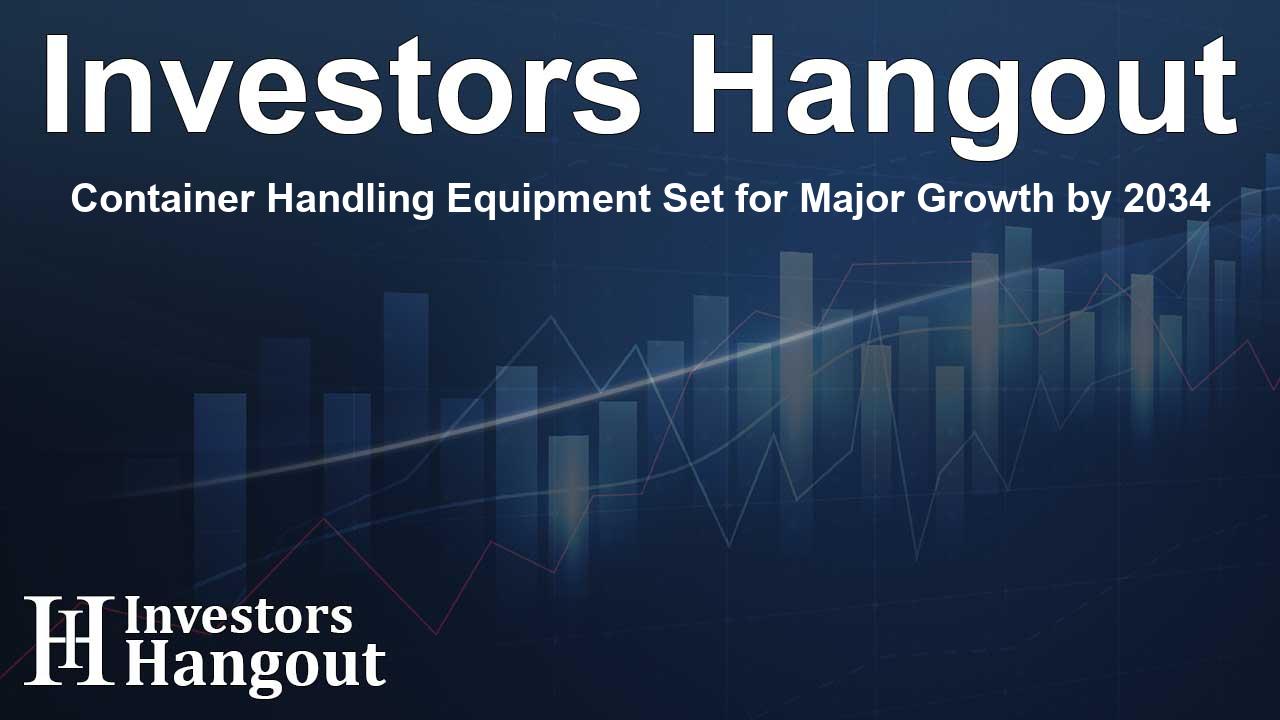Container Handling Equipment Set for Major Growth by 2034

Overview of the Container Handling Equipment Market
The container handling equipment sector is witnessing substantial growth, with predictions indicating a surge to USD 14.6 billion by 2034. This forecast highlights the escalating need for efficient container handling methods that support the rising levels of international trade and the increasing adoption of containerized shipping solutions as essential tools for modern logistics operations.
Driving Forces Behind Market Growth
A significant contributor to this growth is the increased demand for sophisticated handling systems, including cranes, stackers, and automated technologies. As supply chains expand and become more intricate, the need for advanced equipment is paramount. Investments in infrastructure improvements at ports, as well as expansions, are driving firms to adopt up-to-date technologies to effectively manage evolving logistics demands.
Dominance of Diesel-Powered Equipment
In 2024, the diesel-powered equipment segment claimed a substantial share, accounting for 60% of the market. Forecasts suggest this segment will rise to USD 6 billion by 2034. The reliability and cost-effectiveness of diesel systems make them ideal for heavy-duty tasks, especially in locations where electric infrastructure is scarce. Their power output and versatility ensure that diesel equipment will continue to be a preferred choice, particularly in significant logistics hubs.
Importance of Smaller Capacity Systems
The segment of equipment with a capacity up to 10 tons is experiencing notable popularity, primarily due to its affordability and the flexibility it offers across various industries. These systems are widely used in warehouses, manufacturing units, and ports for medium-sized cargo management. Their relatively lower costs compared to higher-capacity alternatives make them accessible to a broader spectrum of users, maintaining their prominent market position.
China's Role in the Global Market
China's container handling equipment market accounted for 30% of the global share in 2024 and is projected to generate USD 1.5 billion by 2034. This dominance can be attributed to the country's robust manufacturing capabilities and strategic investments in port infrastructure. As a key player in the global trade landscape, China utilizes its mass production capacity and competitive pricing strategies to accommodate the growing demand for advanced container handling solutions.
Technological Advancements and Their Impact
Innovation within the container handling equipment sector is crucial for meeting future demands. Technological advancements such as automation and digital connectivity help streamline operations, leading to increased efficiency and lower operational costs. These innovations not only improve performance but also allow businesses to enhance productivity, contributing to overall market growth.
Challenges Faced by Manufacturers
While the container handling equipment market is poised for growth, manufacturers still face challenges, including high initial capital investments and ongoing maintenance costs. These financial pressures can deter smaller operators from entering the market, potentially limiting competition. However, advancements in technology may reduce these costs over time, making it easier for a diverse range of operators to participate.
Future Outlook and Opportunities
Looking ahead, the container handling equipment market is set for substantial expansion. The compounding effects of global trade increases, containerized shipping preferences, and infrastructure investments present abundant opportunities for manufacturers and service providers alike. By leveraging emerging technologies and addressing the challenges that lie ahead, industry participants can position themselves to thrive in an evolving marketplace.
Frequently Asked Questions
What is the expected market size for container handling equipment by 2034?
The market is projected to reach USD 14.6 billion by 2034.
Which segment holds the largest share in the container handling equipment market?
Diesel-powered equipment held a dominant 60% market share in 2024.
Why is the up to 10 tons capacity segment so popular?
This segment is popular due to its affordability and flexibility across various applications.
What is China's contribution to the container handling equipment market?
China accounted for 30% of the global market share in 2024, generating considerable revenue.
What challenges do manufacturers face in this market?
High initial capital and maintenance costs are significant challenges for manufacturers in the container handling equipment industry.
About The Author
Contact Thomas Cooper privately here. Or send an email with ATTN: Thomas Cooper as the subject to contact@investorshangout.com.
About Investors Hangout
Investors Hangout is a leading online stock forum for financial discussion and learning, offering a wide range of free tools and resources. It draws in traders of all levels, who exchange market knowledge, investigate trading tactics, and keep an eye on industry developments in real time. Featuring financial articles, stock message boards, quotes, charts, company profiles, and live news updates. Through cooperative learning and a wealth of informational resources, it helps users from novices creating their first portfolios to experts honing their techniques. Join Investors Hangout today: https://investorshangout.com/
The content of this article is based on factual, publicly available information and does not represent legal, financial, or investment advice. Investors Hangout does not offer financial advice, and the author is not a licensed financial advisor. Consult a qualified advisor before making any financial or investment decisions based on this article. This article should not be considered advice to purchase, sell, or hold any securities or other investments. If any of the material provided here is inaccurate, please contact us for corrections.
